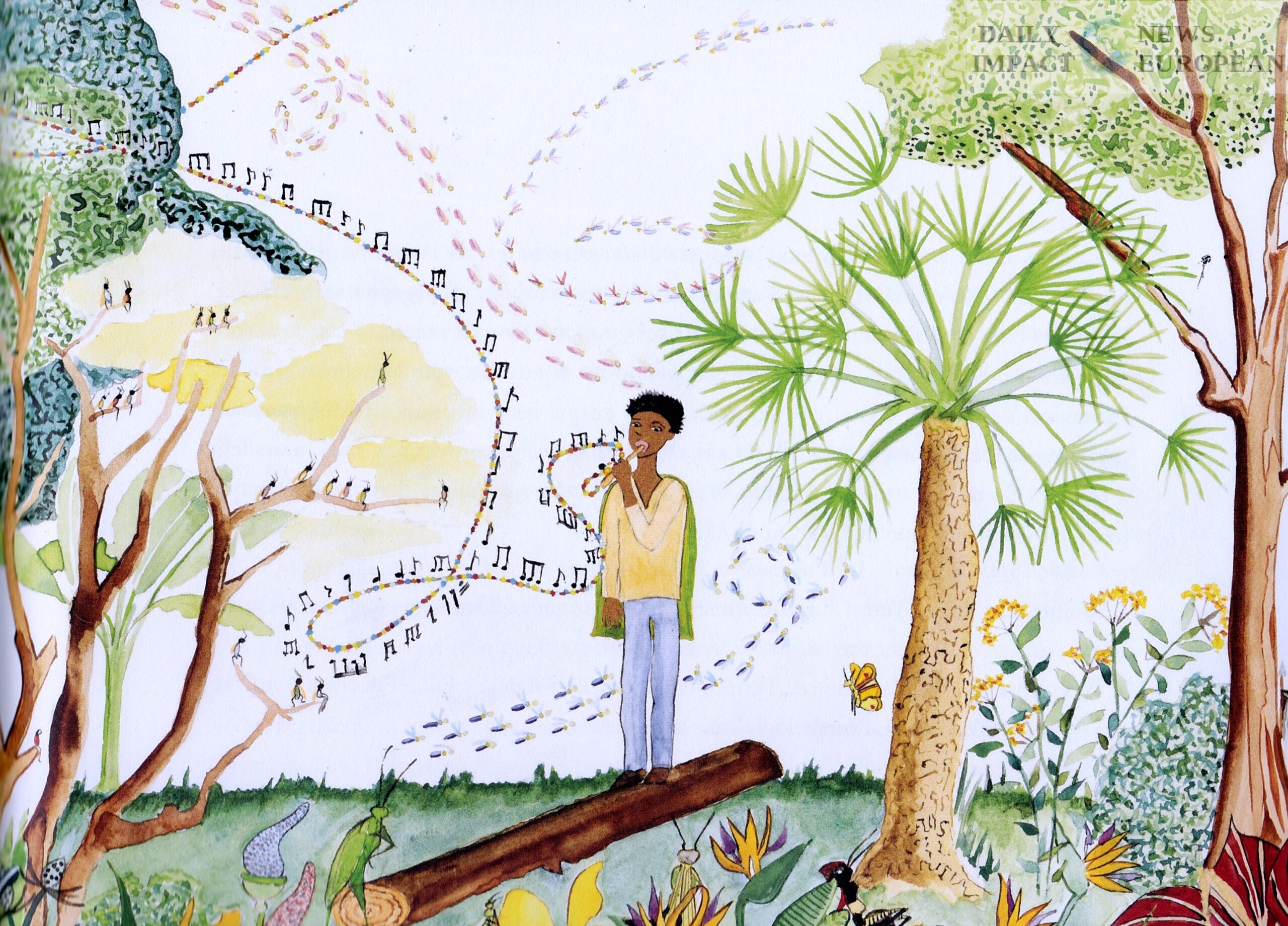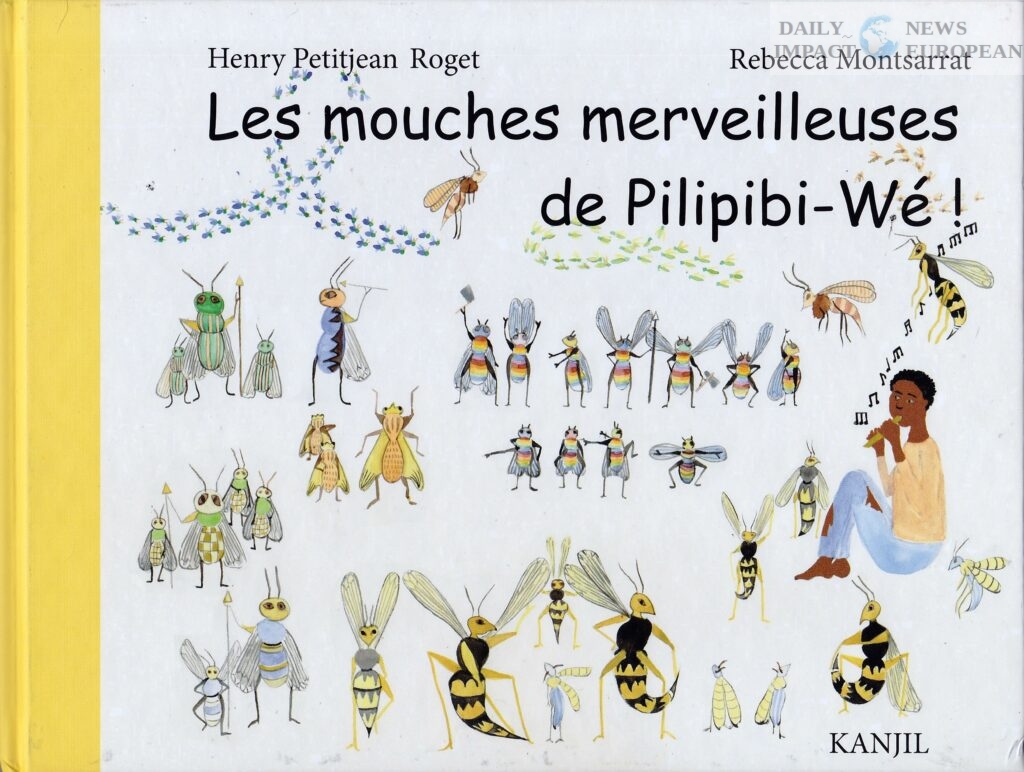“The wonderful flies of Pilipibi-Wé”, a new book by Henry Petitjean Robert was released last June.
After “The Whale with Green Eyes”, the author repeated the experience in collaboration with Rebecca Montsarrat for the illustration.
This book offers a story for children followed by “Karnaval! Karnaval!, an introduction to the carnival of the Antilles and Guyana by Louis Collomb. to better know the names of the different insects and animals mentioned throughout the story, but also of terms used in the book.
Another interpretation is aimed at adults. This tale translates the malaise of a dictator who loses his power in the face of a young opponent leader of men. It is also the victory of love and justice.for freedom.
Synopsis
In the great land of the sands, an imaginary kingdom populated by burlesque characters and insects, extending to the 4 cardinal points and “even towards the sky as far as the eye can see”, King Tête-Cheval 5 lives with his daughter Carolia , surrounded by plants, orchids and animals. The monarch has absolute power and no one dares to disobey him or even speak out against his decisions. The subjects use the most intense politeness. However, the sovereign is bored with his daily life and hopes that someone dares to disobey him. That day, he will meet him.
Loucheloeil is the king’s steward. An obsequious, ugly, spineless and mean character, he is surrounded by informants and reports to the sovereign on the reports of his spies. He will end up unrecognizable, following the attack of insects.
Cariola, princess of the kingdom, sometimes attends the daily report. Charmed by the sound of Pilipibi-Wé’s flute, she met him when his father had kidnapped and imprisoned him. She ends up falling in love with him and will marry him.
Pilipibi-Wé, whose name means a cry of joy in the West Indies, is a young man who was obeyed by an army of flies to the sound of his flute. He will be the one who dared to command and give orders to the flies of the kingdom by playing music. He will receive half of the kingdom after his marriage to Carolia and call it Southern Caroliane. where “Everyone will have to do absolutely what they want”
In this tale, we meet burlesque characters and a multitude of insects, soldiers of freedom. Among Pilipibi-Wé’s army we find mosquitoes, yen yen (black gnats), ti-congo, honey flies, mason wasps… Moreover, laughter is the fatal weapon and the name of the hero is a cry of joy taken up by a song by the Guadeloupe group KASSAV, which made him known throughout the world.
The authors
The author of this tale is Henry Petitjean Roget, also curator of museums in Guadeloupe. A former teacher, this doctor in pre-Columbian archeology is a specialist in the West Indies, due to his birth in Martinique in 1943 and his place of residence in Guadeloupe. Thanks to this, he writes tales “to transmit his passion for Creole culture and the Amerindian world of the West Indies”. He is also the author of “The whale with green eyes”, a tale from the Caribbean islands inspired by real events in Guadeloupe. , a meeting with the first inhabitants of the West Indies. “The wonderful flies of Pilipibi-Wé” is the second album, released last June.
Rebecca Montsarrat is the illustrator of the tales of Henry Petitjean Roget. After the publication of Osso Bucco, album of artists, written in 2018 with Grégoire Mercadier, she illustrated another work, “The whale with green eyes” then now “The wonderful flies of Pilipibi-Wé”, a story of the excesses of absolute power”. The artist likes to “paint nature and the 1,000 details that make it beautiful”. The skeletons she draws represent the contradictions of the brutality of men who are destroying our planet and life.
Carnival! Carnival!
Text by Louis Collomb, Karnaval! summarizes the carnival of the Antilles-Guyana. This former president of the Guadeloupe Carnival Office, replaced by Willy Abré 2 years ago, presents the entities of these carnivals. However, whether in Guyana, Martinique or Guadeloupe, we find traditional figures such as the bear, the ox, the wild man or the witch, despite the changes in the second half of the 20th century.
Guyana brings together, in its carnival, figures inspired by the forest including the Bobis (European carnival bears), the sou-mouses, the lan-mô (death and its skeletons), the bawé–yo zombies (evil spirits of the forest), the nèg-mawon (fugitive slaves) or the jé-fawin who throw flour on the children in the streets of Cayenne. The Touloulou, a man dressed in the fashion of Venice, is the mistress of the carnival.
The Martinican carnival is characterized by the red devil who eats children and the devil with cloven feet, dressed in black. We witness the obscene dance of the nèg-gwo-siwo and the mas a-lan-mô (death masks) run after the girls, after dark.
In Guadeloupe, mas bands inspired by traditional figures participate in parades accompanied by musical groups with snare drums, “Mas” or “po” (skin). The “fouettards”, symbols of fertilization and fertility, precede the farmhouses, cracking their whips, a symbol of slavery, to the sound of percussion made from tin kegs.
The Guadeloupe carnival begins on the first Sunday of January and runs until Mardi-Gras, every Sunday. The big Sunday Shrove parade takes place in Pointe-à-Pitre and Shrove Tuesday in Basse-Terre. Weddings take place on Shrove Monday. Ash Wednesday is the last day of Carnival, the last parades are for Mi-Carême. King Vaval, in papier-mâché or cardboard, is burned after a gigantic burial called “vidé”; all the farmhouses parade through the streets of Pointe-à-Pitre and can only be chased away by a great uproar.
Little lexicon of the West Indies
To end the book and better understand the story, a small lexicon of the West Indies is offered to readers. We find the names of the different flies, the vegetation, the animals mentioned or even characters linked to the islands, including the Reverend Father Du Tertre.
Supporters and editor
Published with the support of the DAC Guadeloupe and DAC Martinique, the Departmental Council and the Regional Council of Guadeloupe, this book was published by the independent French publishing company KANJIL which bears the name of a buckshot from the tropical forest of ‘Indonesia. She produces albums often accompanied by a CD, collections of tales, novels, stories recorded in music, films, which give “Reperes in the Modern Jungle”.
Committed to authors and artists, Kanjil is more oriented towards young people and makes it possible to share the diversity of the world. It also turns to adults always in search of discovery thanks to its collection of historical novels, foreign literature and recordings of great texts captured during memorable storytelling performances.


More Stories
METAL D’ALCOVE, the workshop of Eric KATZ, lighting sculptor in Montmartre
Paris Marathon 2024: Victory for Ethiopians at the Paris marathon
Gelsomina